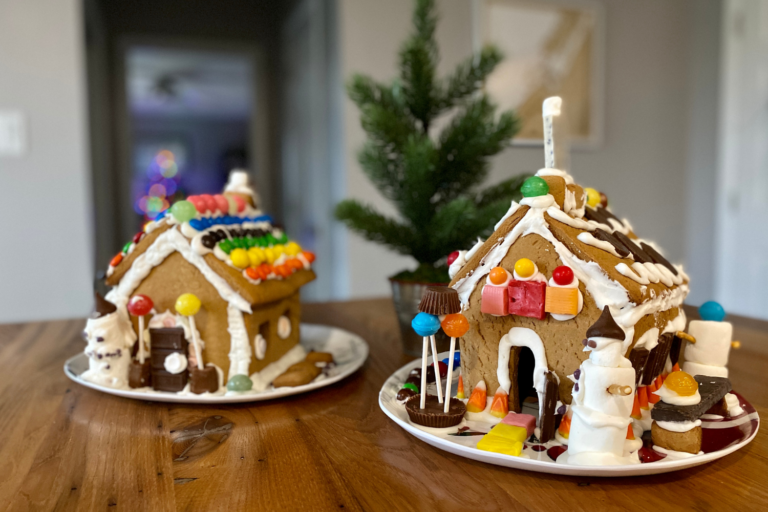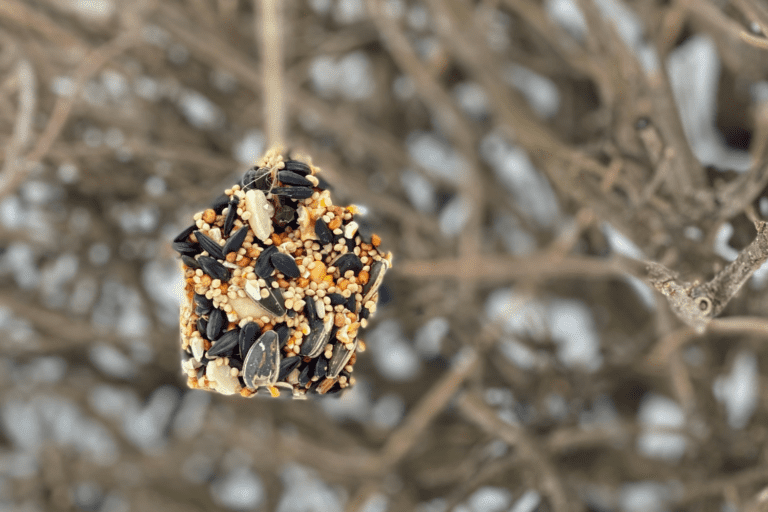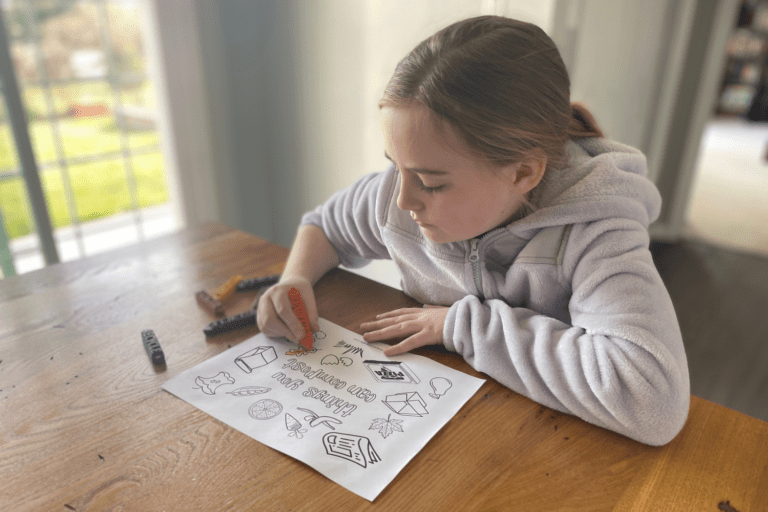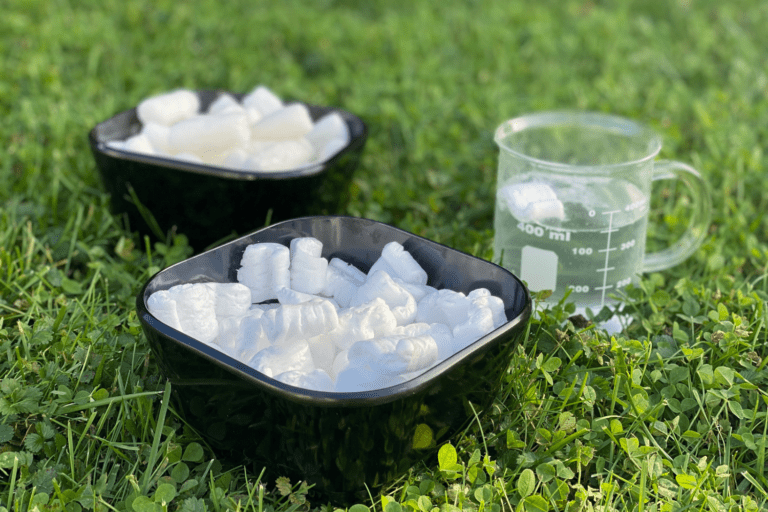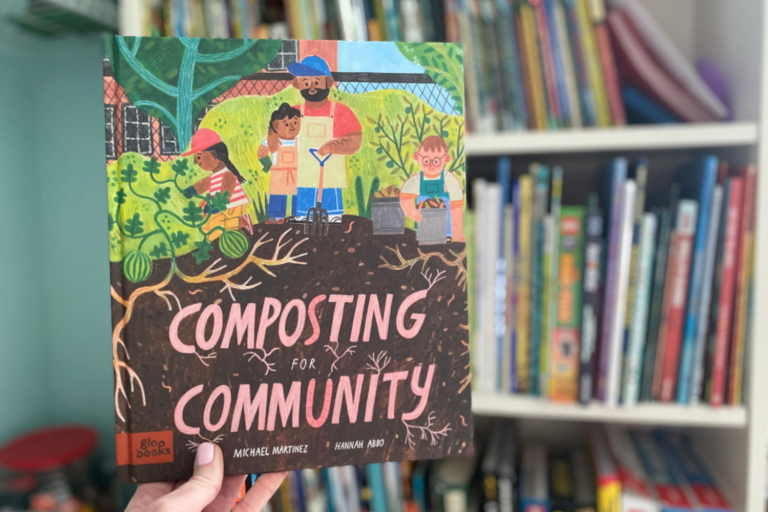How to Grow Your Own Popcorn
Did you know that you can grow your own popcorn plant? Read on to learn the science behind how my family took store-bought popcorn kernels and grew our favorite movie night snack in our backyard garden!
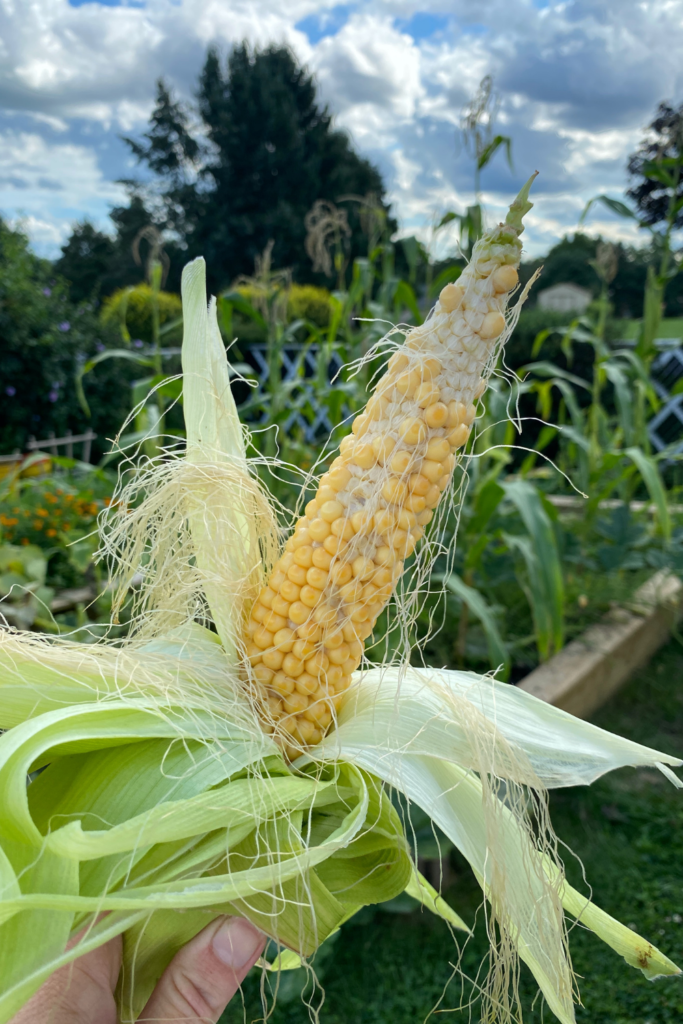
Growing Popcorn in Our Garden
There’s nothing better than a bowl of freshly popped popcorn slathered in salt and butter to accompany a family movie night. Especially if you’ve grown the popcorn yourself!
This past spring, my kids and I conducted a little science experiment to see if we could grow popcorn from kernels we purchased at the grocery store. To my complete surprise, it worked! After four months of watering, weeding, watching and waiting, we harvested over a dozen ears of corn!
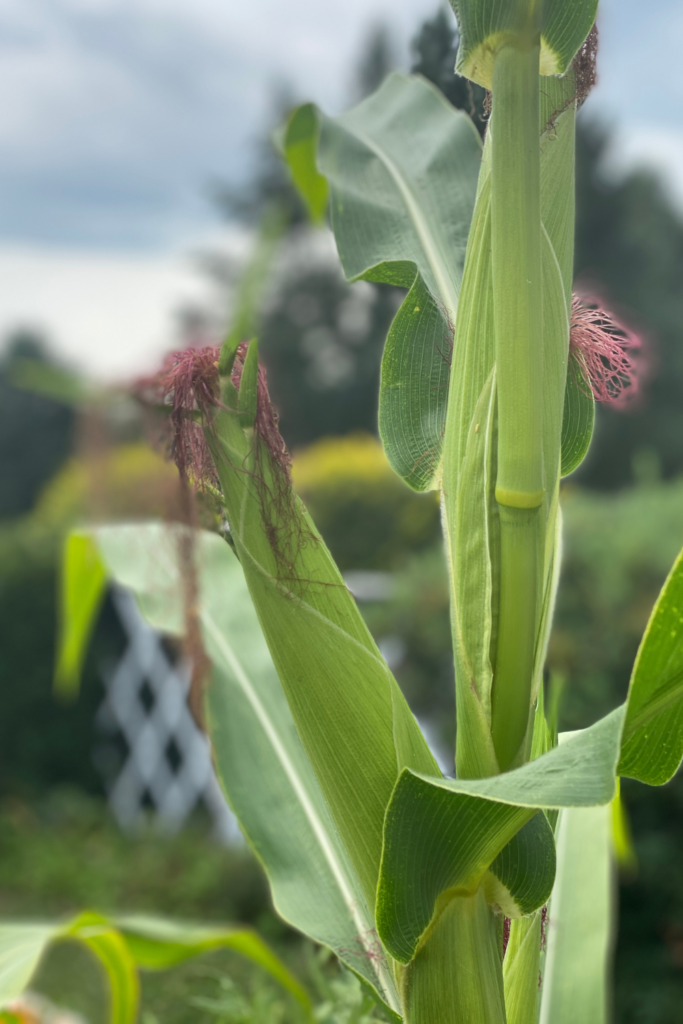

How is Popcorn Different from Other Corn Types?
There are many different varieties of corn plants. The most common types grown in the United States are sweet corn, flint corn and dent corn. In order to understand how popcorn actually works, it’s helpful to understand the difference between each type of corn.
- Dent corn: gets its name from the “dent” at the top of each kernel, this type of corn is the number one variety grown in the United States, mainly used for animal feed.
- Sweet corn: eaten for every meal, this type of corn has a much higher sugar content than dent corn and is grown for human consumption.
- Flint corn: seen in the fall as decorative corn, the exterior of each kernel is much harder than dent or sweet corn. Popcorn is a type of flint corn, as the kernels contain a soft, starchy center that, when heated, allows moisture to build up inside the kernels and cause them to “pop”.
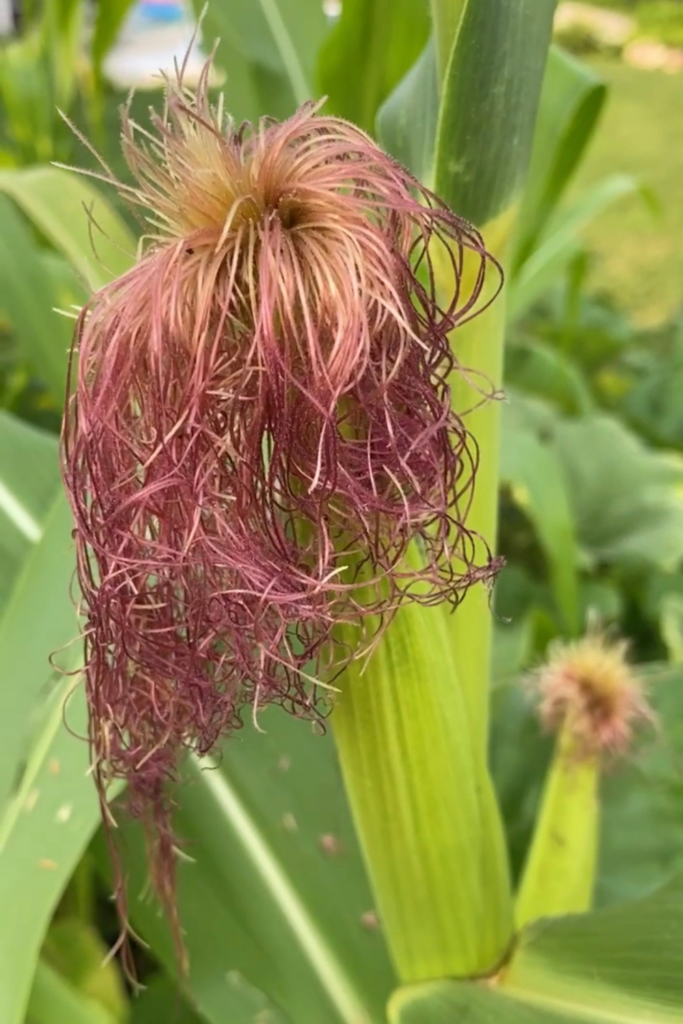

Does Popcorn Look Like Sweet Corn?
Popcorn plants look almost identical to sweet corn plants. In my experience, the best way to tell the difference between a popcorn plant and a sweet corn plant is to examine the corn kernels. Popcorn is a type of flint corn and the exterior of the corn kernel is much harder than a kernel of sweet corn. Using your fingernail, you can easily penetrate through a kernel of sweet corn. The exterior of a popcorn kernel will not be as simple to push through.
The Science of Popcorn Plant Propagation
Say that five times fast!
When corn kernels (a.k.a. seeds) are planted in the spring, each plant will produce both male and female flowers, so these plants rely on wind pollination to create corn cobs. The male flowers sit on top of the plant in the tassel, while the small female flowers are found along the cob.
Each corn silk is attached to a tiny flower inside the husk. When pollen from the male flower drops on the silk, it travels down the silk to pollinate the female flower, resulting in one kernel of corn. You quickly realize how important it is for pollen to drop on each silk in order to create a full cob of corn kernels!
Corn plants take up a lot of space, relative to the amount of food they produce. Each stalk grows an average of two corn cobs, which is why many gardeners shy away from allocating space in their plots for corn.
Can Popcorn Plants Grow in Containers?
Growing any type of corn is ideally planted in a field or garden bed, as you need multiple plants in order for cross pollination to occur. That being said, it is possible to grow popcorn plants in large containers, as long as you have one plant per pot and grow multiple pots of popcorn. Soil health and proper water drainage play critical roles in successfully growing popcorn. The University of Minnesota has an insightful resource for growing popcorn in home gardens that may be helpful when preparing your soil for planting.
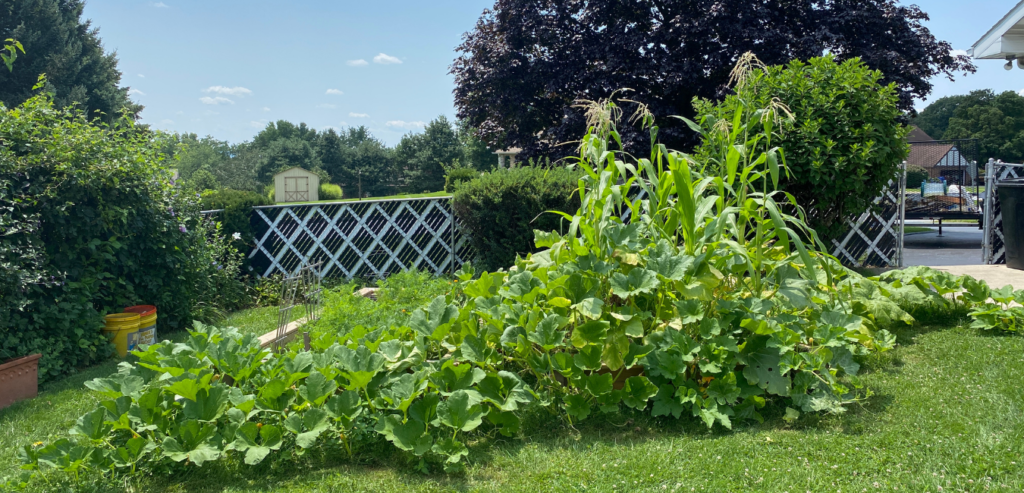

Materials Needed to Grow Your Own Popcorn
Now that you understand how popcorn pollination works, here is a short list of what you’ll need to successfully grow your own popcorn!
- Popcorn kernels (at least 8-10)
- Damp towel
- Garden area approximately 1 m x 1.5 m (3 ft x 5 ft)
To have the greatest chance of pollination, we planted ten sprouted seeds in two rows in a raised bed, with each seed approximately 30 cm (1 ft) apart. I’ve read that you can successfully grow corn in pots, however I cannot personally speak to that method, as we only tried an outdoor garden plot. You’d need a lot of pots, because, as stated earlier, corn is pollinated by wind so many plants are necessary for success.
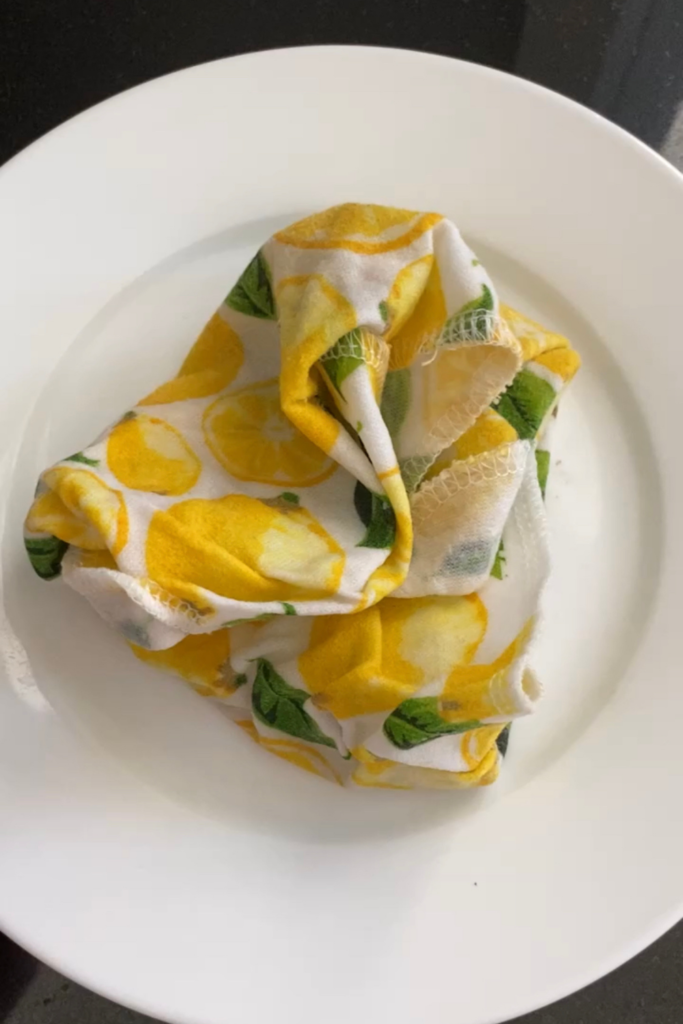

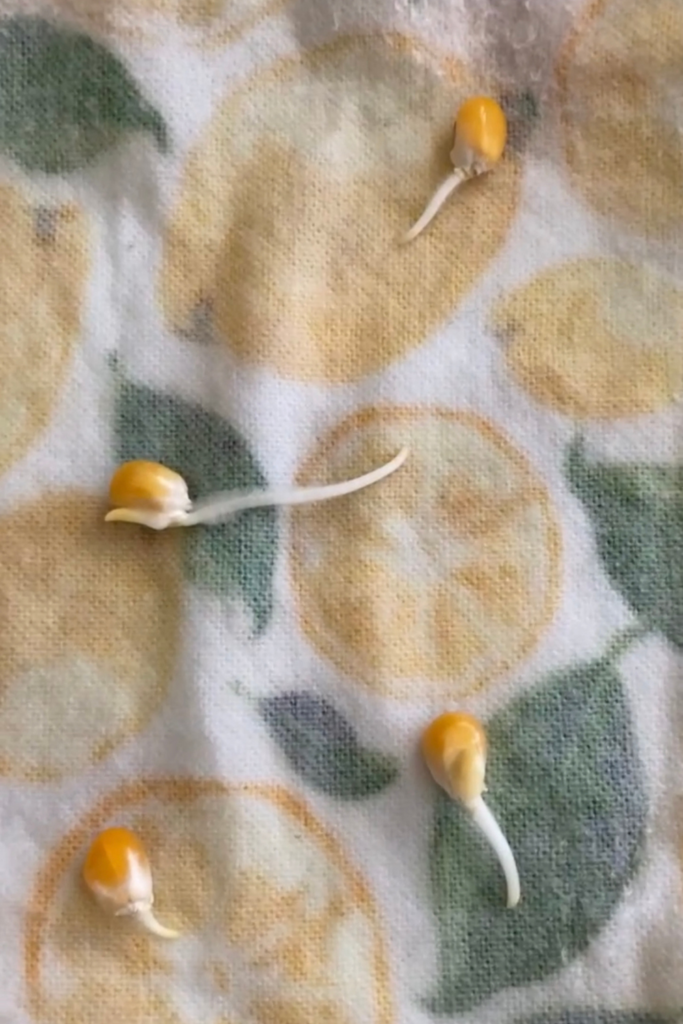

Instructions to Grow Your Own Popcorn
Here are the steps we took to successfully grow our own popcorn in our backyard garden. If you don’t have the space to grow corn, or you’re reading this outside of the ideal growing season for corn, you can still complete steps one through four to demonstrate to your learners how to sprout popcorn kernels!
- Dampen a cloth with water.
- Place dried, store bought popcorn kernels on the damp cloth and wrap them up.
- Place the wrapped kernels in a warm spot, such as a kitchen countertop or sunny window.
- Within a week, open up the cloth and check the kernels – you should observe that they have sprouted!
- Plant the sprouted kernels outside in soil, approximately a foot apart from one another. Check your growing zone for the optimum time to plant your sprouted seeds. My family and I live in Pennsylvania, so we planted ours the first week of May.
- After four months of watering, weeding and watching, the sprouted kernels should grow into tall stalks of corn. You should notice that the popcorn cobs are much skinnier than sweet corn cobs.
- Let the cobs dry on the corn stalks. You want to give the kernels time to harden their outer shells, as this is what holds in the moisture from the starchy center, allowing the kernels to pop when heated.
- Once dried, harvest the corn and remove the kernels from the cob. My kids and I used our hands to push the kernels off of the cob into a bowl.
- Time to test! Heat a small amount of popcorn kernels in an air popper or over the stove in oil to see if they pop. If they do, the kernels are ready. If they burn (as our first attempt did) that means that they need more drying time. Spread the remaining kernels out on a cookie sheet and allow them to continue to dry out.
- Once the kernels are ready, pop them to your heart’s content , add your favorite toppings (ours are butter and salt) and enjoy!


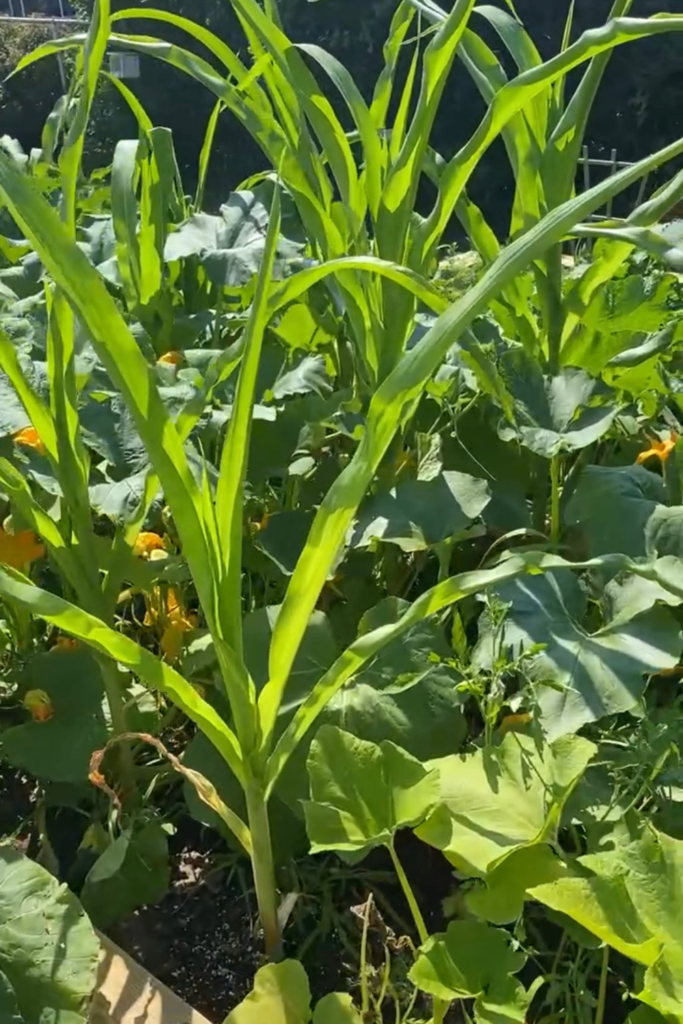

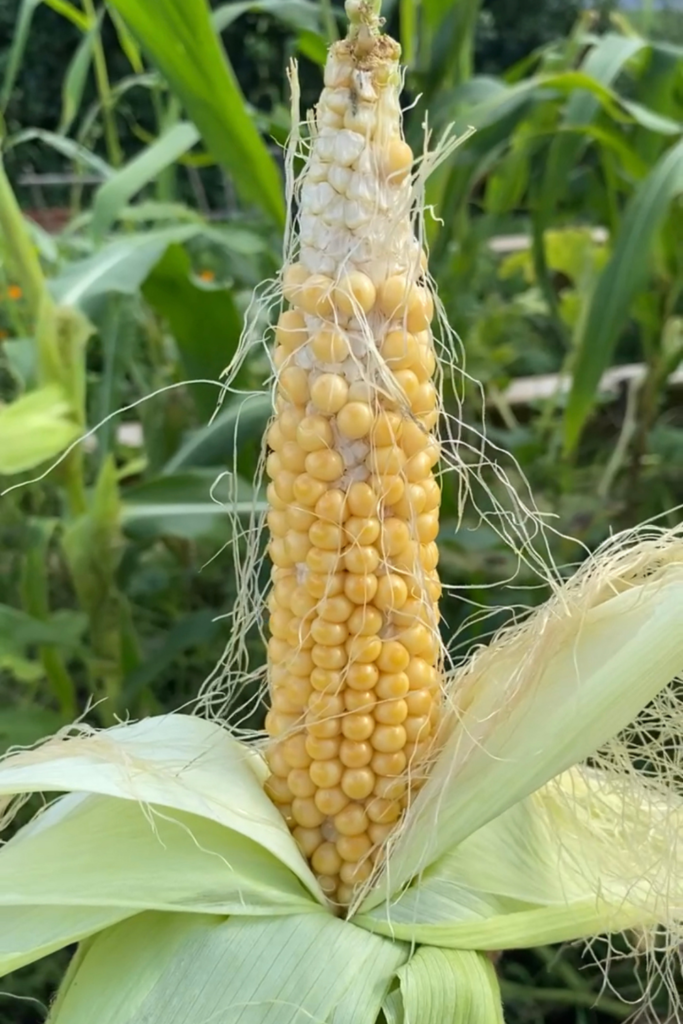

I Want to Hear From You
I’d love to hear if you try this popcorn growing experiment! Like I mentioned before, even if you do not have the space or time for growing corn, just watching the dry, dormant popcorn kernels sprout to life is a fun science experiment for your kids to witness the life that exists inside a seed.
Be sure to share your photos with me if you choose to sprout your own popcorn kernels by tagging me on Instagram or Facebook @thoughtfullysustainable.
Interested in learning more about science and sustainability projects? Subscribe to my free newsletter and get ideas and printables delivered directly to your inbox. No spam, just sustainability and science. I promise.
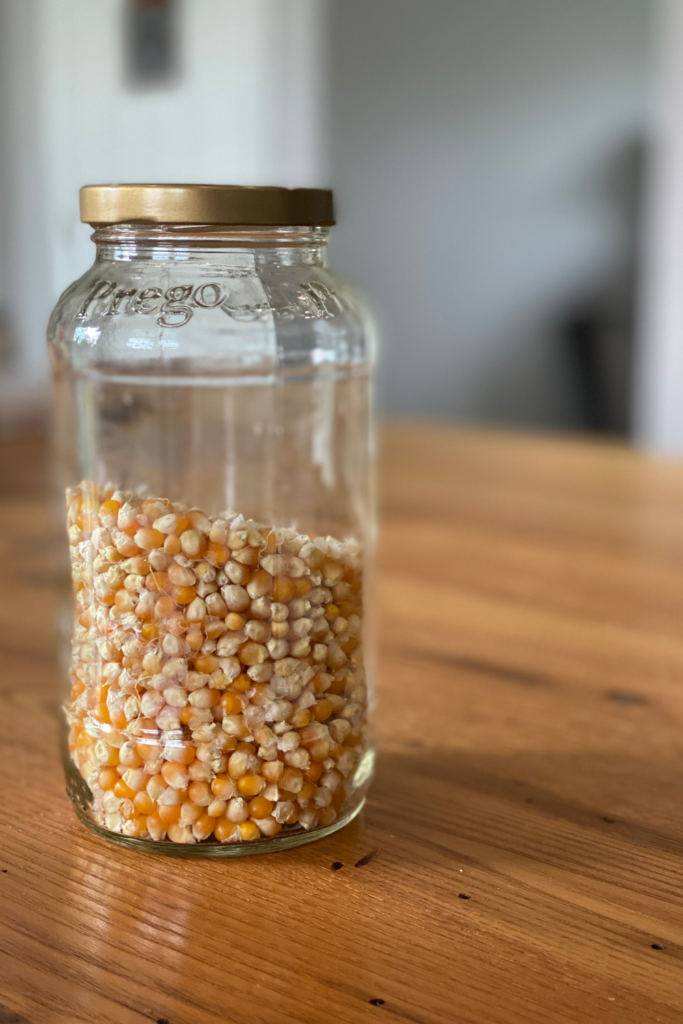



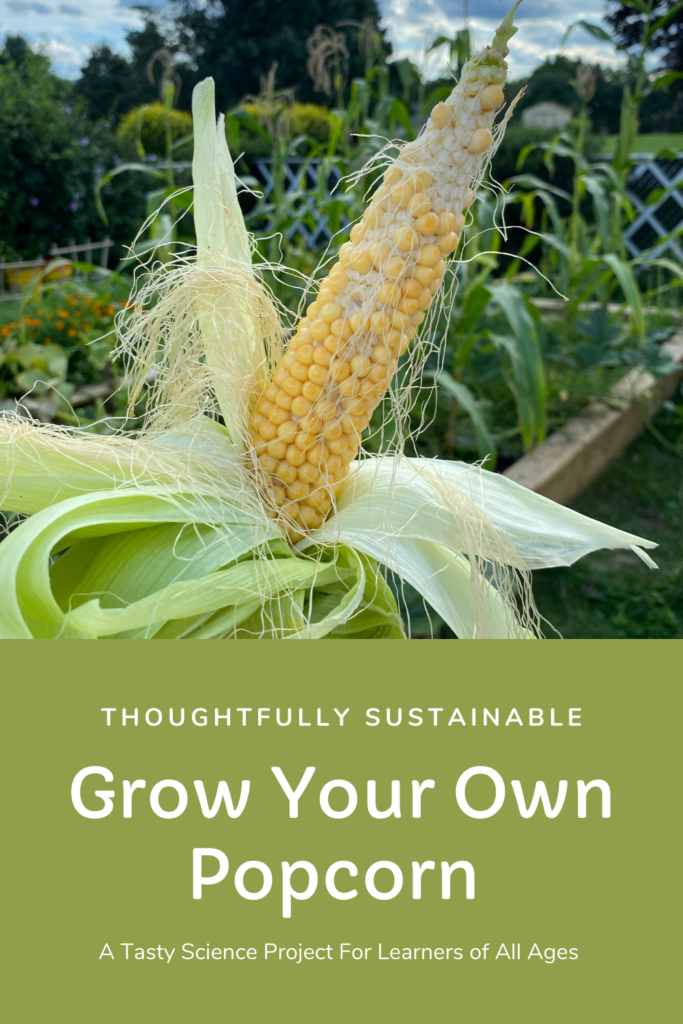

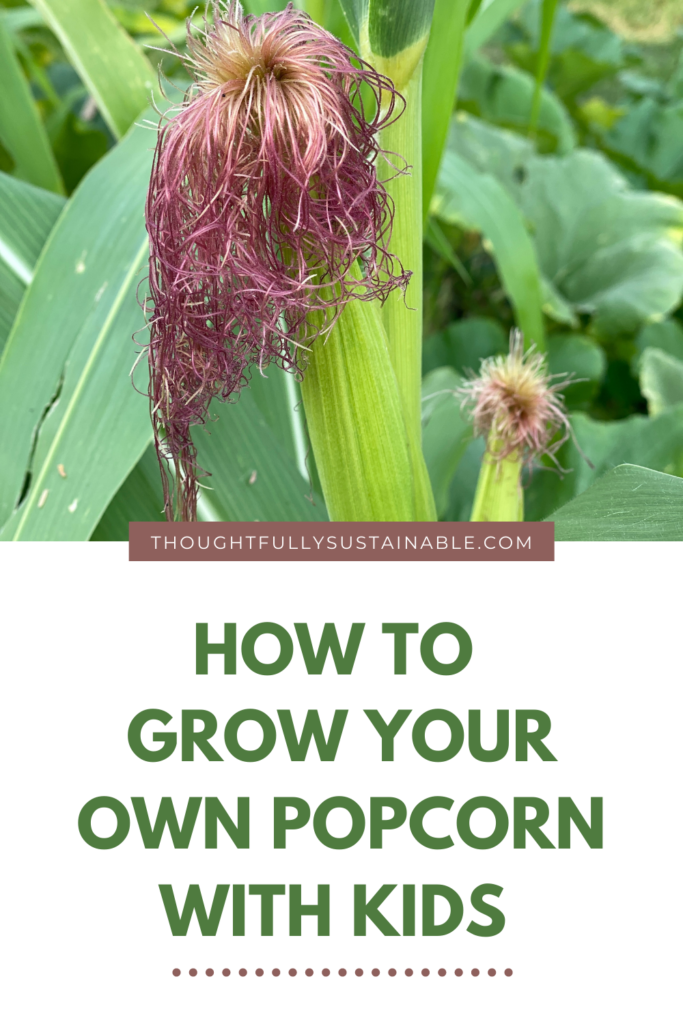

How to Grow Your Own Popcorn
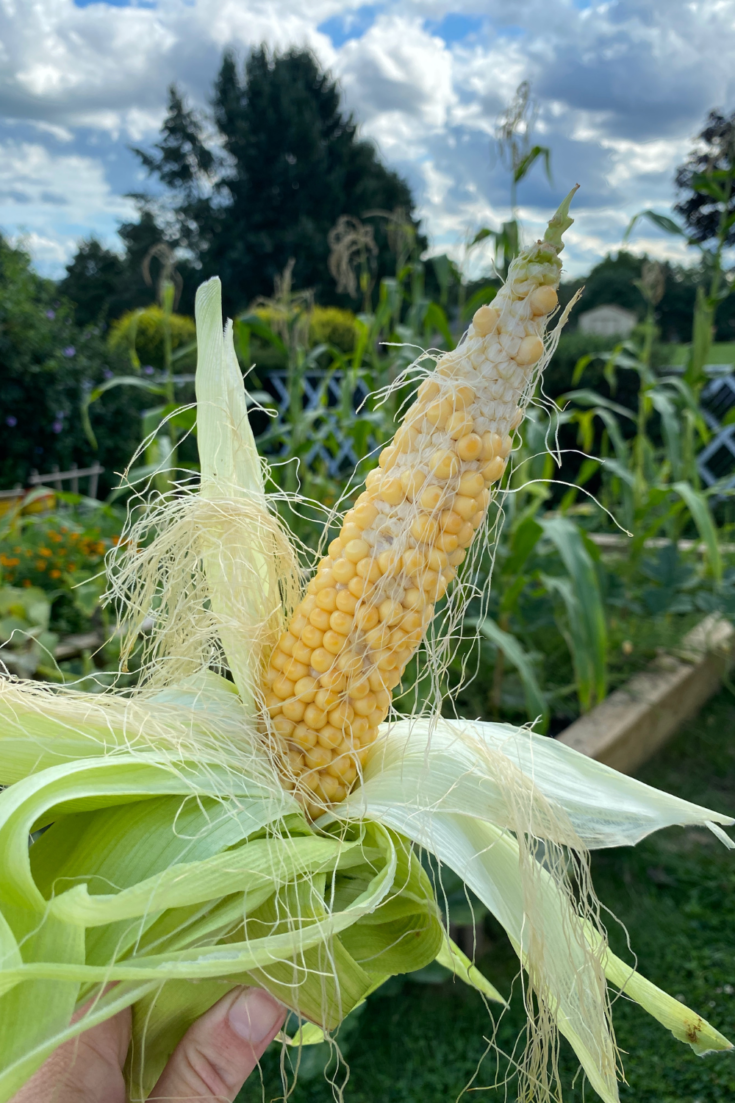

Did you know that you can grow your own popcorn? Read on to learn exactly how you can, too!
Materials
- Popcorn kernels (at least 8-10)
- Damp towel
- Garden area approximately 1 m x 1.5 m (3 ft x 5 ft)
Instructions
- Dampen a cloth with water.
- Place dried, store bought popcorn kernels on the damp cloth and wrap them up.
- Place the wrapped kernels in a warm spot, such as a kitchen countertop or sunny window.
- Within a week, open up the cloth and check the kernels - you should observe that they have sprouted!
- Plant the sprouted kernels outside in soil, approximately a foot apart from one another. Check your growing zone for the optimum time to plant your sprouted seeds. My family and I live in Pennsylvania, so we planted ours the first week of May.
- After four months of watering, weeding and watching, the sprouted kernels should grow into tall stalks of corn. You should notice that the popcorn cobs are much skinnier than sweet corn cobs.
- Let the cobs dry on the corn stalks. You want to give the kernels time to harden their outer shells, as this is what holds in the moisture from the starchy center, allowing the kernels to pop when heated.
- Once dried, harvest the corn and remove the kernels from the cob. My kids and I used our hands to push the kernels off of the cob into a bowl.
- Time to test! Heat a small amount of popcorn kernels in an air popper or over the stove in oil to see if they pop. If they do, the kernels are ready. If they burn (as our first attempt did) that means that they need more drying time. Spread the remaining kernels out on a cookie sheet and allow them to continue to dry out.
- Once the kernels are ready, pop them to your heart’s content , add your favorite toppings (ours are butter and salt) and enjoy!

